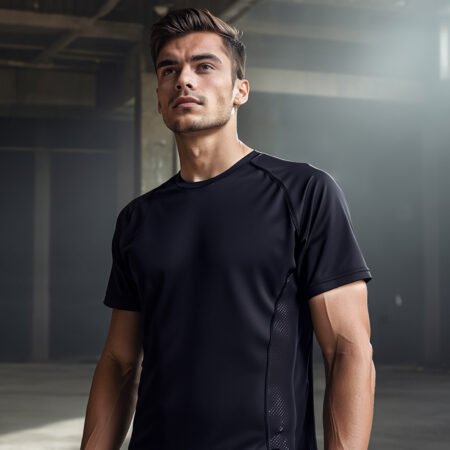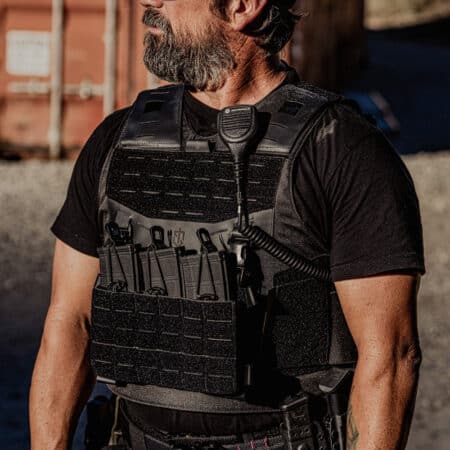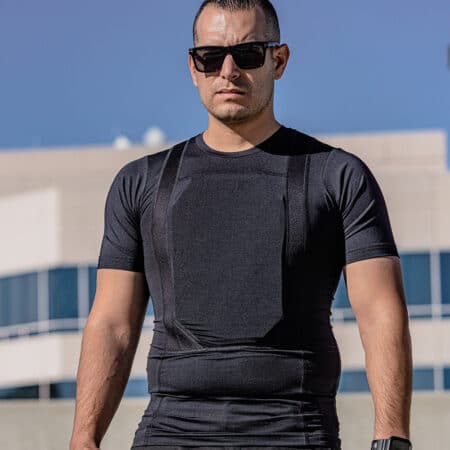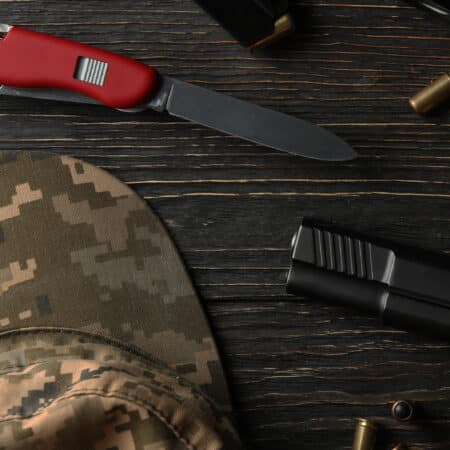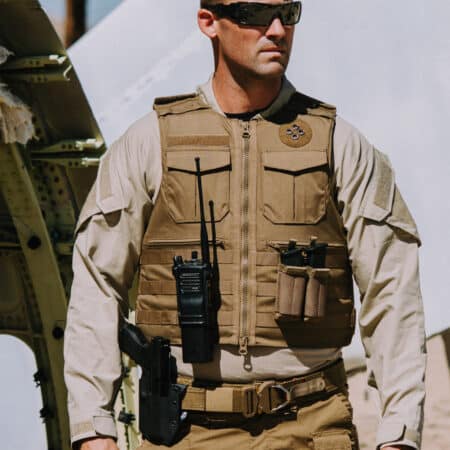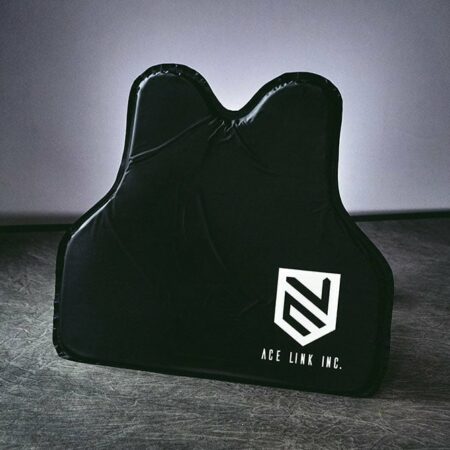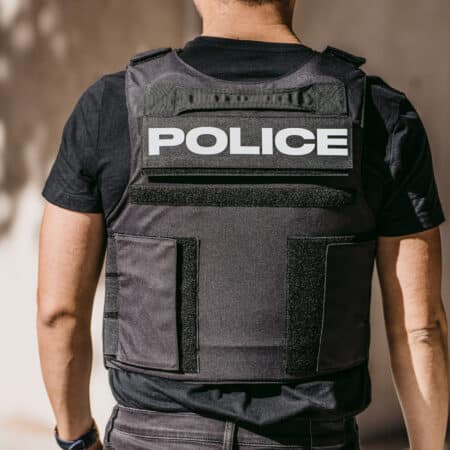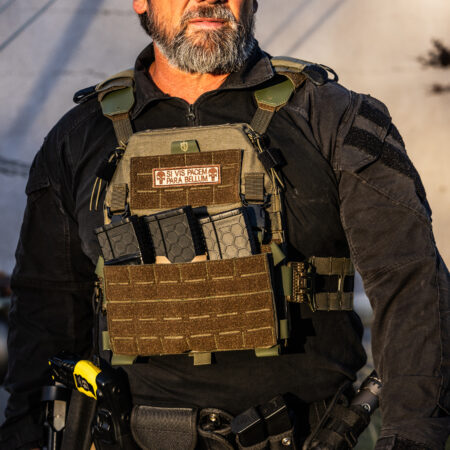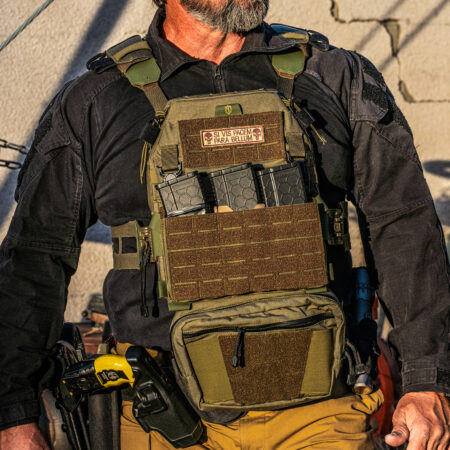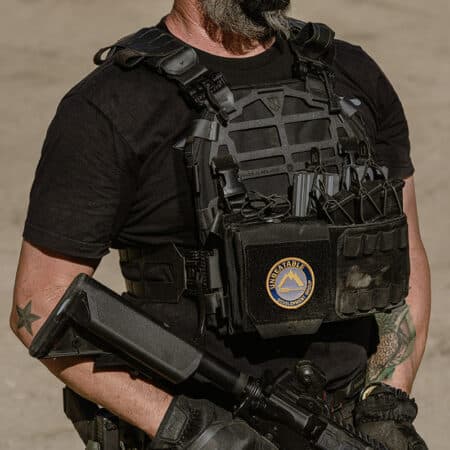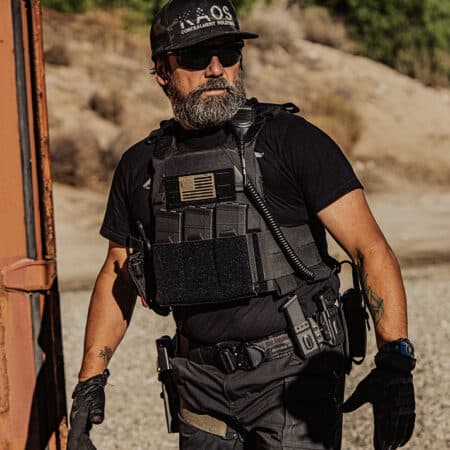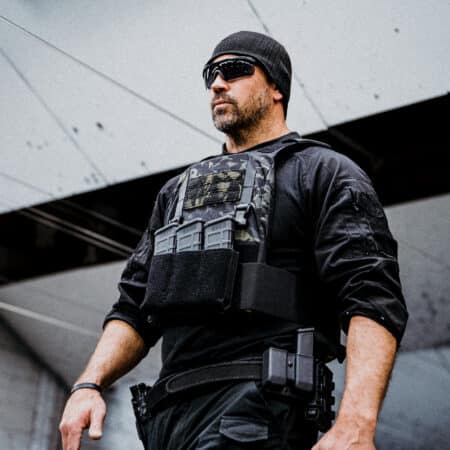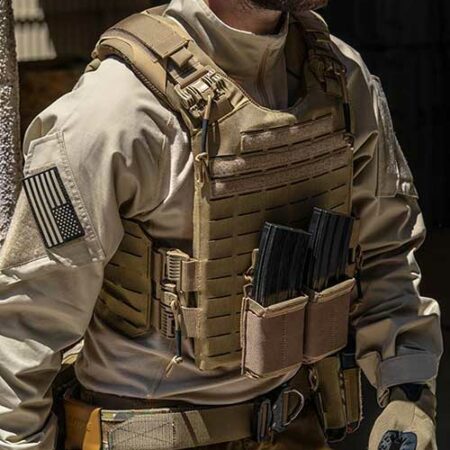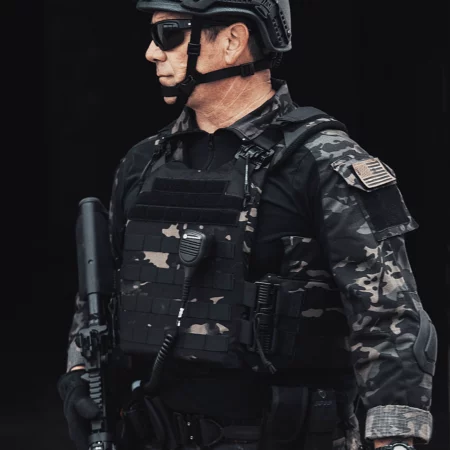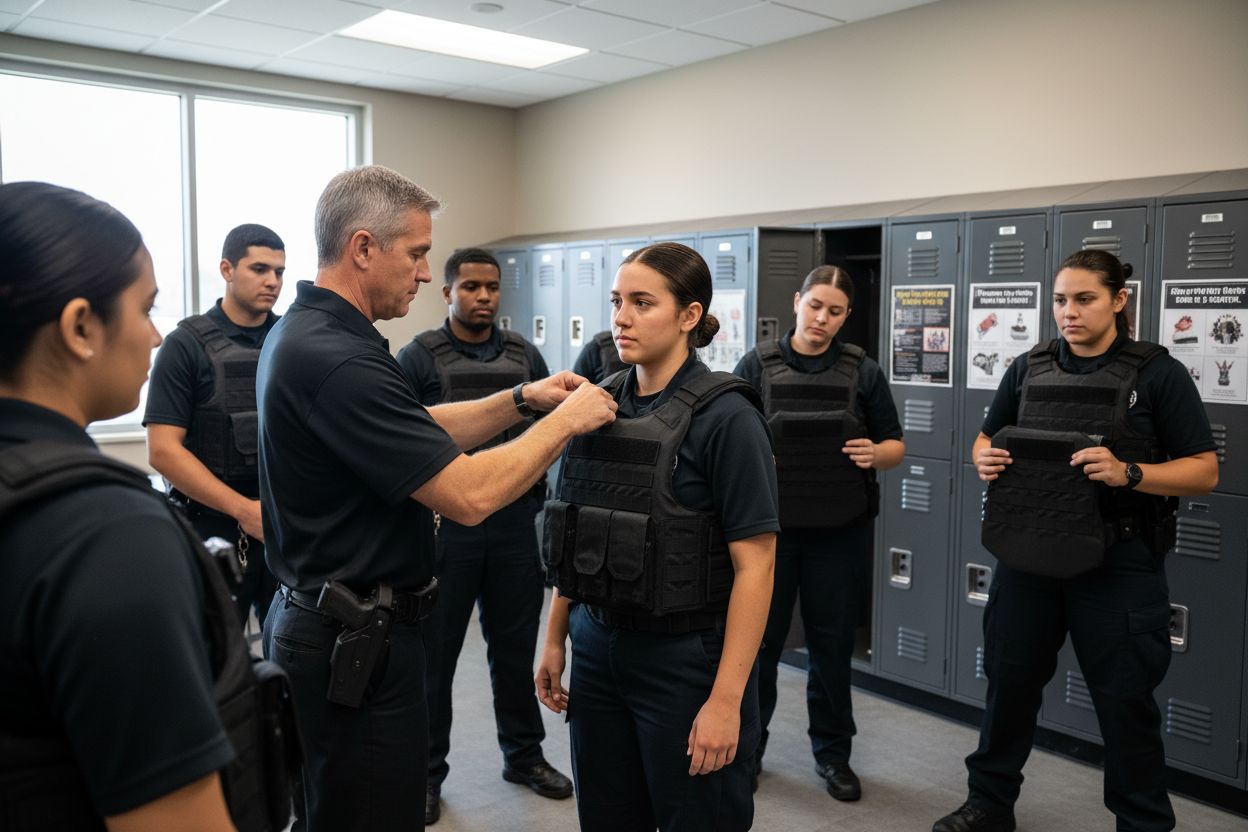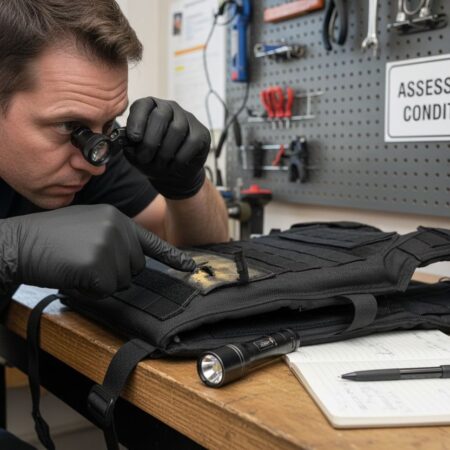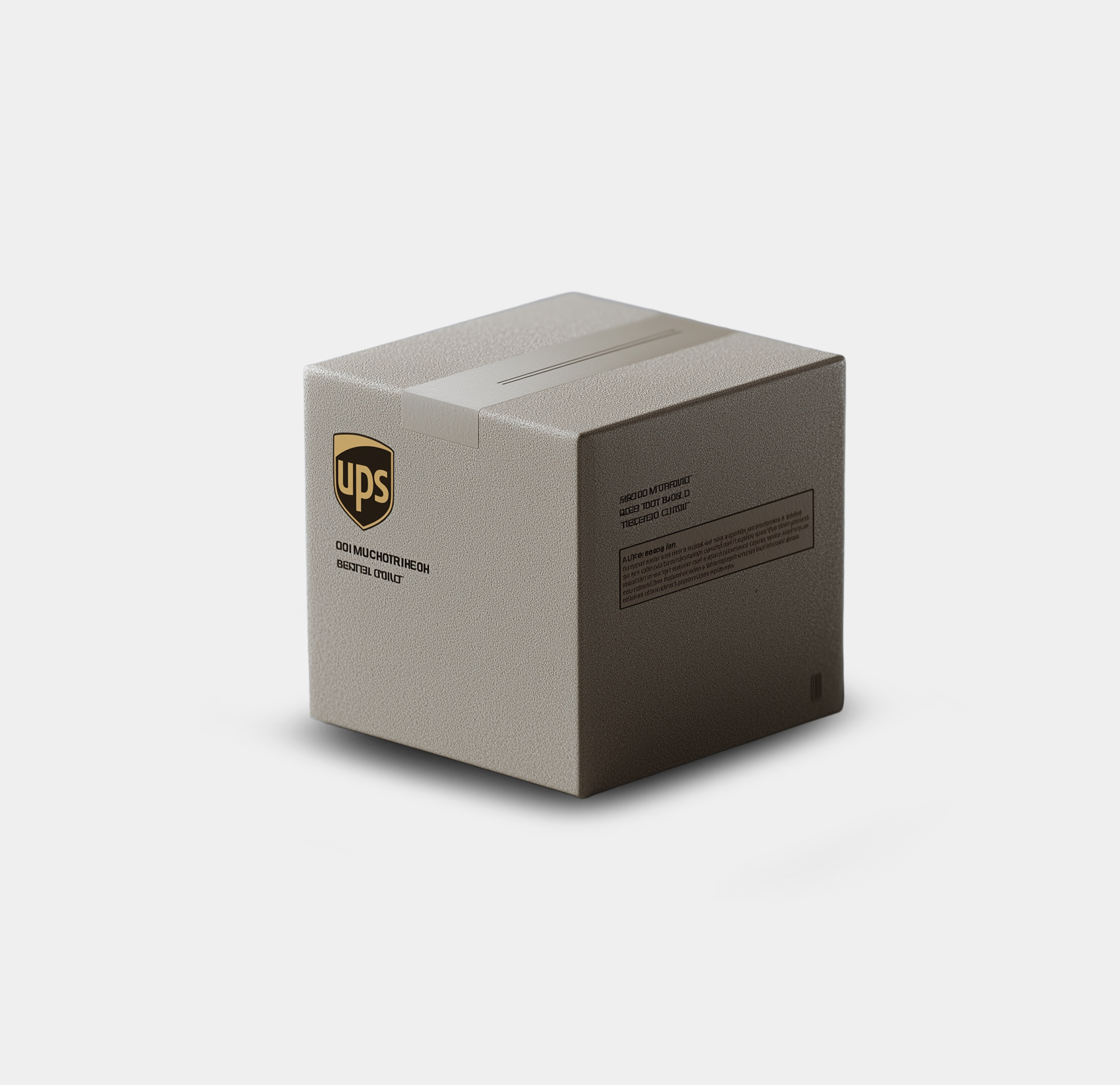- Table of Contents
- Quick Summary
- 1: Understand the Types of Correctional Armor Available
- 2: Assess Correctional Armor Threat Level
- 3: Standards for Correctional Armor Certification
- 4: Correctional Armor Comfort and Mobility
- 5: Evaluate Material Durability and Protection Levels
- 6: Consider Additional Features like Pockets and Adjustments
- 7: Review Care and Maintenance Requirements
- 8: Compare Brands and Read User Reviews
- Find Correctional Armor Built for Real-World Demands
- Frequently Asked Questions
- Recommended
Correctional officers walk into unpredictable environments every single day and the risks are far from ordinary. Most people think standard body armor gets the job done, but the stats reveal something different: corrections body armor is a category on its own. Only about 90 percent of police wear certified body armor, while correctional officers use it at a much lower rate, despite facing 254 injuries per 10,000 officers—with 40 percent caused by violence. Protective gear is not a checklist item. It can mean the difference between a close call and a life-altering incident.
Table of Contents
- Understand The Types Of Correctional Armor Available
- Assess Your Threat Level And Needs
- Know The Standards For Body Armor Certification
- Choose The Right Fit For Comfort And Mobility
- Evaluate Material Durability And Protection Levels
- Consider Additional Features Like Pockets And Adjustments
- Review Care And Maintenance Requirements
- Compare Brands And Read User Reviews
Quick Summary
| Takeaway | Explanation |
|---|---|
| Understand armor types: stab, slash, ballistic | Correctional armor includes stab-resistant, slash-resistant, and ballistic protection designed for specific threats faced by officers. |
| Assess unique threat levels and needs | Individual risk assessments vary greatly among correctional environments, necessitating tailored protective gear for maximum safety. |
| Prioritize armor fit for comfort and mobility | Properly fitted armor improves operational effectiveness by enhancing comfort and allowing for quick responses in critical situations. |
| Review and ensure armor certification standards | Choose armor that meets NIJ standards for reliable protection, ensuring it has undergone proper testing against the specific threats. |
| Conduct regular maintenance to preserve effectiveness | Systematic care and inspections are essential to maintain the armor’s protective capabilities and ensure officer safety over time. |
1: Understand the Types of Correctional Armor Available
Choosing the right correctional armor requires a comprehensive understanding of the available protection types. Correctional officers face unique risks that demand specialized protective gear tailored to their work environment. Our preparedness guide emphasizes the critical nature of selecting appropriate body armor for professional safety.
Correctional armor typically falls into three primary categories: stab-resistant, slash-resistant, and ballistic protection. According to research from the National Institute of Justice, these armor types are designed to address specific threats encountered in correctional facilities.

The key types of correctional armor include:
- Stab-Resistant Vests: Engineered to protect against puncture threats from improvised weapons
- Slash-Resistant Armor: Designed to prevent cutting and slashing attacks with minimal fabric penetration
- Ballistic Protection Vests: Provide defense against firearm threats and potential gun-related incidents
Understanding the performance standards is crucial. The National Institute of Justice classifies body armor into different protection levels, with each level offering varying degrees of protection. Level I stab-resistant armor protects against approximately 85% of potential stabbing force, while Level III provides protection against 96% of potential threats.
When selecting correctional armor, officers must consider factors beyond basic protection. Weight, flexibility, comfort, and ease of movement are equally important considerations that directly impact an officer’s ability to perform duties effectively and safely. The right armor should not only protect but also allow for optimal operational performance in high-stress environments.
2: Assess Correctional Armor Threat Level
Assessing your specific threat level and individual needs is crucial when selecting correctional armor. The complexity of correctional environments demands a personalized approach to protective gear. Research from law enforcement safety studies highlights that threat assessment is not a one-size-fits-all process.
Determining your threat level requires careful evaluation of multiple factors. Correctional officers must consider their specific work environment, facility security classification, inmate population characteristics, and historical incident data. Threat dynamics can vary significantly between minimum, medium, and maximum-security facilities.
Key considerations for threat assessment include:
- Facility security classification and historical incident rates
- Specific inmate population demographics and behavioral patterns
- Your assigned role and daily interaction intensity
Statistical evidence reveals that correctional officers experience 254 injuries per 10,000 full-time officers, with approximately 40% resulting from violent incidents. This underscores the critical importance of selecting armor that matches your precise operational environment.
Professional threat assessment involves analyzing several critical dimensions. Weapon prevalence, inmate aggression levels, and facility design all contribute to determining appropriate protection levels. Some facilities might require higher slash and stab resistance, while others demand more ballistic protection.
Level IIIA armor represents an excellent standard for many correctional settings, offering comprehensive protection without compromising mobility. However, individual risk profiles can necessitate more specialized armor configurations.
Advanced threat assessment goes beyond statistical analysis. It requires understanding your personal risk exposure, physical capabilities, and the specific challenges of your daily responsibilities. Consulting with experienced security professionals and conducting thorough workplace risk evaluations can provide invaluable insights into selecting the most appropriate correctional armor.
3: Standards for Correctional Armor Certification
Understanding body armor certification standards is critical for ensuring reliable protection in high-risk correctional environments. The National Institute of Justice (NIJ) provides the most authoritative framework for body armor performance evaluation and certification details can be explored in our comprehensive protection guide.
The NIJ establishes rigorous testing protocols that assess body armor’s capability to resist specific ballistic and edged weapon threats. Certification levels range from Level IIA to Level IV, with each level representing increasing protection capabilities against different weapon types and ammunition.

Key certification standards include:
- Ballistic Resistance Standards: Testing armor’s ability to stop specific ammunition types
- Stab and Slash Resistance Standards: Evaluating protection against puncture and cutting threats
- Impact and Trauma Protection: Measuring the armor’s capacity to reduce blunt force trauma
According to independent research on protective equipment, approximately 90% of police officers utilize certified body armor, yet this percentage drops significantly in correctional settings. This disparity underscores the importance of understanding and adhering to established certification standards.
Correctional officers should look for specific certification markers that indicate comprehensive protection. NIJ Standard 0115.00 represents the current benchmark for stab and slash-resistant armor, providing a comprehensive framework for assessing protective gear’s effectiveness.
Importantly, certification is not a permanent status. Body armor requires regular recertification and performance testing to maintain its protective integrity. Factors such as wear, environmental conditions, and physical damage can compromise an armor’s protective capabilities over time.
Our Level 3+ armor plates represent an example of meeting and exceeding current ballistic standards, providing correctional professionals with confidence in their protective equipment. Understanding these standards is not just about compliance but about ensuring maximum safety in unpredictable and potentially dangerous work environments.
4: Correctional Armor Comfort and Mobility
Selecting correctional armor that provides optimal comfort and unrestricted mobility is crucial for professional effectiveness. Research on law enforcement protective gear emphasizes the critical relationship between protective equipment design and operational performance.
A poorly fitted armor system can significantly compromise an officer’s ability to respond quickly in high-stress situations. Ergonomic design is not a luxury but a necessity in correctional environments where split-second reactions can mean the difference between safety and potential injury.
Key considerations for proper fit include:
- Body measurements and individual physique
- Range of motion requirements for daily tasks
- Weight distribution and potential strain points
According to biomechanical studies on protective equipment, improper armor fitting can reduce operational mobility by up to 30%. This reduction directly impacts an officer’s ability to perform critical functions like rapid movement, restraint techniques, and emergency response.

Proper fitting involves more than just size matching. Adjustable straps, flexible materials, and contoured designs play significant roles in creating armor that moves with the body rather than restricting it. Modern correctional armor technologies incorporate advanced materials like lightweight ceramics and high-performance polymers to minimize weight while maximizing protection.
Correctional officers should prioritize armor systems that offer:
- Customizable sizing options
- Breathable fabric technologies
- Minimal additional weight burden
Level 3+ armor plates represent an excellent example of balancing protection with wearability. Professional fitting sessions with experienced equipment specialists can help identify the most suitable armor configuration for individual body types and operational requirements.
Ultimately, the right correctional armor should feel like a second skin – providing comprehensive protection without compromising the officer’s natural movement and operational readiness.
5: Evaluate Material Durability and Protection Levels
Durability and protection levels are fundamental considerations when selecting correctional armor. Modern protective materials represent a sophisticated intersection of advanced engineering and safety technology. Our comprehensive preparedness guide offers deeper insights into material science and protective gear selection.
Research from ballistic protection studies indicates that material composition directly impacts an armor’s long-term performance and reliability. Aramid fibers, ceramics, and high-performance polymers represent the cutting-edge materials used in contemporary correctional armor systems.
Key material evaluation factors include:
- Resistance to environmental degradation
- Long-term structural integrity
- Weight to protection ratio
Ceramic and composite materials offer significant advantages in protection levels. Level IV armor plates, for instance, can stop armor-piercing rifle rounds, providing maximum protection in high-risk scenarios. Our NIJ Rated Level IV Armor Plates demonstrate the pinnacle of protective technology.
Durability extends beyond initial protection capabilities. Repeated stress, UV exposure, moisture, and temperature variations can compromise armor effectiveness over time. Professional-grade correctional armor must withstand diverse environmental conditions without significant performance degradation.
Correctional officers should prioritize armor with:
- Multi-year warranty coverage
- Documented performance testing results
- Manufacturer’s comprehensive performance guarantees
Advanced materials like graphene and ceramic composites are revolutionizing protective gear, offering unprecedented strength-to-weight ratios. These innovations enable armor systems that provide maximum protection with minimal operational encumbrance.
Ultimately, material durability is about consistent, reliable protection. Correctional professionals cannot afford compromise when their safety is at stake. Investing in high-quality, scientifically engineered protective materials is not an expense but a critical safety strategy.
6: Consider Additional Features like Pockets and Adjustments
Beyond basic protection, advanced correctional armor features can significantly enhance an officer’s operational effectiveness. Our preparedness guide highlights the importance of thoughtful gear design beyond fundamental protective capabilities.
Ergonomic research on protective equipment demonstrates that strategic additional features can improve both comfort and functionality. Modular design elements allow officers to customize their protective gear according to specific operational requirements.
Key additional features to consider include:
- Integrated communication system compatibility
- Concealed document and equipment storage pockets
- Quick-release adjustment mechanisms
Adjustable features are critical for ensuring proper armor fit. Flexible strap systems and modular plate carriers enable personalized configuration that accommodates different body types and allows for layering with other protective equipment.
Pocket design represents more than mere storage. Strategic pocket placement can minimize equipment interference while providing convenient access to essential tools. Correctional officers require armor that supports their operational workflow without creating additional physical constraints.
Important considerations for additional features include:
- Weight distribution of added components
- Durability of attachment mechanisms
- Maintenance and cleaning accessibility
Our Level 3+ armor plates exemplify modern design principles, incorporating thoughtful additional features that enhance overall protective performance. Advanced designs now integrate moisture-wicking fabrics, ventilation channels, and ergonomic contouring to improve wearer comfort.
Ultimately, additional features should enhance operational readiness without compromising the armor’s primary protective function. Correctional professionals must balance aesthetic and functional considerations, selecting gear that provides comprehensive protection while supporting their dynamic work environment.
7: Review Care and Maintenance Requirements
Proper care and maintenance are critical for preserving the protective integrity of correctional armor. Our comprehensive preparedness guide emphasizes the importance of systematic equipment maintenance to ensure consistent performance.
Research from protective equipment studies reveals that improper maintenance can reduce armor effectiveness by up to 40%. Correctional officers must treat their protective gear as a critical safety investment requiring regular professional attention.
Key maintenance considerations include:
- Regular visual inspection for damage
- Proper cleaning and decontamination procedures
- Appropriate storage conditions
Environmental factors significantly impact armor durability. UV exposure, moisture, temperature fluctuations, and chemical interactions can gradually compromise material structural integrity. Professional-grade armor requires specialized cleaning protocols that maintain protective capabilities without degrading specialized fabrics and composites.
Maintenance best practices demand:
- Avoiding machine washing or dry cleaning
- Using manufacturer-recommended cleaning solutions
- Documenting maintenance and inspection history
Our Stabproof Vests are engineered with advanced materials that simplify maintenance requirements. However, even high-performance gear requires systematic care to maintain optimal protective standards.

Correctional professionals should establish a structured maintenance schedule that includes:
- Quarterly professional inspections
- Documented cleaning protocols
- Systematic replacement of aging components
Ultimately, proactive maintenance is a safety strategy. By implementing rigorous care practices, correctional officers can maximize their armor’s protective capabilities, ensuring reliable performance during critical operational scenarios. Neglecting maintenance is not just an equipment issue – it’s a personal safety risk.
8: Compare Brands and Read User Reviews
Selecting the right correctional armor requires comprehensive brand research and careful evaluation of user experiences. Our preparedness guide provides strategic insights into making informed protective gear selections.
Market research on protective equipment demonstrates that professional recommendations and real-world user feedback are invaluable in assessing armor performance beyond manufacturer specifications.
Key considerations when comparing brands include:
- Compliance with NIJ certification standards
- Professional warranty coverage
- Independent third-party testing results
User reviews offer critical insights that technical specifications cannot fully capture. Experienced correctional professionals provide nuanced perspectives on real-world armor performance, durability, and potential limitations that may not be immediately apparent in marketing materials.
Important review evaluation strategies involve:
- Analyzing long-term usage experiences
- Identifying consistent performance patterns
- Understanding potential manufacturer limitations
Critical review analysis should focus on:
- Detailed performance documentation
- Verified user experiences from professional environments
- Consistent quality across multiple product iterations
Ultimately, brand comparison is about building trust. Correctional professionals need armor solutions that demonstrate consistent reliability, innovative design, and unwavering commitment to officer safety. Thorough research transforms equipment selection from a transaction into a strategic safety investment.
Below is a comprehensive table summarizing the 8 essential tips for choosing correctional armor, offering an at-a-glance overview of the article’s key considerations and recommendations.
| Tip / Area | Key Summary | Why It Matters |
|---|---|---|
| 1. Understand Armor Types | Choose between stab-resistant, slash-resistant, and ballistic vests, tailored to specific correctional threats. | Ensures your armor protects against the unique dangers present in your facility. |
| 2. Assess Threat Level & Needs | Evaluate your facility type, inmate population, and incident history to determine proper protection required. | Helps select gear matched to real-world risks and operational roles. |
| 3. Know Certification Standards | Seek armor meeting NIJ standards for ballistic, stab, and slash resistance; verify recertification status. | Guarantees armor reliability and regulatory compliance for officer safety. |
| 4. Choose the Right Fit | Prioritize custom sizing, ergonomic design, and comfort to maximize mobility and wearability. | Poor fit impairs reaction time, comfort, and safety during daily duties. |
| 5. Evaluate Material Durability | Select advanced materials like ceramics, aramid fibers, and polymers with proven longevity and protection. | High-quality materials ensure consistent long-term performance against varied threats. |
| 6. Consider Additional Features | Opt for armor with adjustable straps, modular pockets, and quick-release mechanisms to enhance usability. | Extra features improve efficiency and operational readiness in dynamic environments. |
| 7. Review Care & Maintenance | Follow routine inspections, proper cleaning, and correct storage to uphold armor effectiveness over time. | Regular maintenance preserves protection, prevents performance decline, and extends lifespan. |
| 8. Compare Brands & Reviews | Research certified brands, warranty coverage, and professional feedback for informed purchasing decisions. | Trusted brands and positive user experiences add confidence and transparency to gear choice. |
Find Correctional Armor Built for Real-World Demands
Choosing the right correctional armor goes far beyond understanding protection types and NIJ standards. You know just how vital it is to select gear that offers the right fit, proven durability, and features like adjustability to handle split-second threats. Facing unpredictable environments or the daily risk of violence, you cannot afford armor that is uncomfortable or uncertified. The threat is real, and your safety depends on making the right choice.
Get the confidence that comes with armor designed for your duty. Visit AcelinkArmor.com for a full range of Level 3+ Armor Plates and certified NIJ Rated Level IV Plates engineered for correctional professionals. Take the next step to protect yourself today. Make your decision with expert support and shop now to secure gear that meets the highest standards.
Frequently Asked Questions
What types of correctional armor are available?
Correctional armor typically includes stab-resistant, slash-resistant, and ballistic protection vests. Each type is designed to address specific threats faced by correctional officers in their work environment.
How do I assess my threat level when choosing correctional armor?
Assessing your threat level involves evaluating factors such as facility security classification, historical incident data, inmate demographics, and your role and daily interactions within the facility. This personalized approach helps ensure you select armor that adequately meets your specific needs.
What are the important standards for body armor certification?
The National Institute of Justice (NIJ) provides the primary certification standards for body armor, which includes ballistic resistance standards, stab and slash resistance standards, and impact protection. Armor should display certification markers that indicate compliance with these rigorous testing protocols.
How can I ensure the correct fit for my correctional armor?
To ensure the correct fit, consider your body measurements, range of motion requirements, and weight distribution. Look for adjustable straps and customizable sizing options. A proper fit is essential for maintaining mobility and comfort while wearing the armor.
Recommended
- Best Pouches and Accessories Security Officers Must Have – Ace Link Armor
- Types of Ballistic Helmets & How to Choose One – Ace Link Armor
- How to choose the right Battle Belt for you? – Ace Link Armor
- The Best Types Of Body Armor For Home Defense. – Ace Link Armor
- 7 Essential Tips for Costumes Construction Worker Gear – WorkWearComfort
- Best Workwear for Electricians: Top Choices for 2025 – WorkWear Comfort



